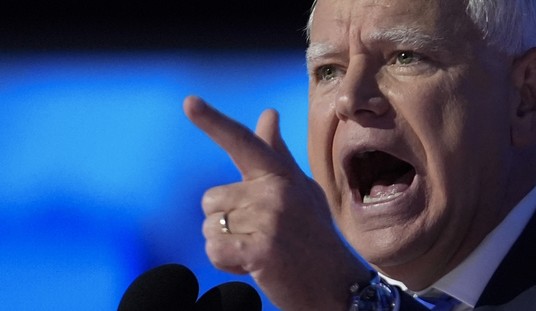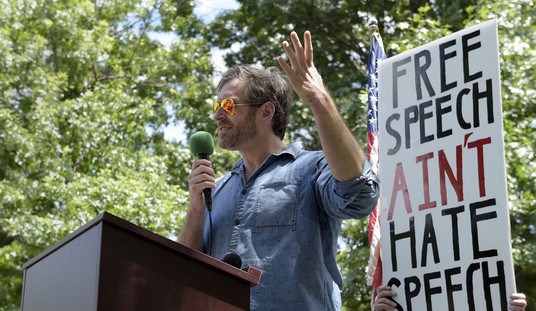Vladimir Putin’s out-maneuvering of President Obama following the Syrian chemical weapons attack has led some to ask if Putin is reviving the Cold War purportedly won by the U.S. The question itself reflects a lack of understanding of the unbroken continuity of Cold War behavior by Moscow since the transition from the Soviet Union to the “new” Russia.
In Russia, the KGB was never disbanded following the advent of the Yeltsin regime in December 1991 despite a number of name changes and re-organizations. The decision by the Russian Foreign Intelligence Service (SVR) in December 1992 to substitute for the celebration of the first anniversary of the service the celebration of the 72nd anniversary of Lenin’s CHEKA reflected the unbroken continuity of the power and status of the Soviet secret police.
In the same year, Yeltsin’s regime sold poison gas to Syria that could be mounted on missiles. A year later, it was reported that Russia air-delivered weapons from North Korea to Syria, and, in 1997, Russia and Syria held joint military exercises while maintaining their Soviet era Treaty of Friendship.
In addition, Yeltsin and Cuba sent materiel through Cyprus to Syria to assist in making missiles with chemical warheads.
These activities, along with Moscow’s unbroken support from the Soviet era of Iranian missile and nuclear reactor development, suggest that what the world witnessed in 1991 was not a collapse but a strategic retreat that enabled the Soviet Union, now re-baptized as “Russia,” to enter Western institutions such as the G-7 as an ostensible democracy even as the leadership in Russia and many former Soviet republics remained KGB controlled or open to KGB blackmail.
Believing in a completely new Russia also prompted the U.S. to forego major nuclear weapons modernization through the last three administrations despite the deployment of a new Russian nuclear missile system under Yeltsin and a growing nuclear missile modernization by Putin.
The latter is taking place even as the U.S. reduces its arsenal under the New Start Treaty. In addition, the borders of the former Soviet Union remained under the control of Russian troops, and its republics were linked by treaty to Russia.
Furthermore, GRU Chief General Valentin Korabelnikov denied allegations that the GRU [military intelligence service] had lost its networks of agents over the past thirteen years. It is interesting that he waited to reveal this in his first interview as GRU chief in July of 2003 under Putin yet the general had been appointed to his post in 1997 under Yeltsin at a time when such a revelation might have cast doubt on Russia’s “break with the past.”
The dramatic events between Gorbachev’s last year and Yeltsin’s first, portrayed world-wide on television, although exhibiting peculiar aspects such as Gorbachev’s ability to broadcast a video while under house arrest and the KGB coup plotters’ failure to cut Yeltsin’s communication lines, masked the strategic continuity between the Soviet Union and Russia.
A clue that something was wrong with the concept of a “new” Russia was the continuing prominent role in the government in Moscow played by Yevgeny Primakov, long-time KGB liaison to Arafat and Saddam. Primakov served as the last Soviet foreign intelligence chief, the first Russian foreign intelligence chief, Russian foreign minister, and then prime minister as well as a close advisor to President Putin.
The penetration of American intelligence services by Ames (CIA) and Hanssen (FBI) under first Soviet and then Russian auspices, as well as the report that a Soviet-established GRU network set up in North America is “likely continuing its operations” are further evidence of Moscow’s unbroken geopolitical aims. A speech by Boris Yeltsin at the July 1990 CPSU Congress when he resigned from the Communist Party of the Soviet Union was an early indication that the ultimate result of restructuring and establishing various political parties would be to maintain the elite’s power through different means:
A change over to a multiparty system is inevitable. Various political parties are gradually being formed in our country. At the same time, a fundamental renewal of the CPSU is inevitable. It is necessary to organizationally codify all the platforms that exist in the CPSU and to give every Communist time for self-determination…a parliamentary-type Party will emerge. Only this type of Party…will be able to be a leading Party and to win elections for one or another of its factions. With the development of democratic movements in the country and the further radicalization of restructuring, it will be possible for this alliance to become the vanguard of society in actual fact.
In December 1992, Foreign Minister Kosyrev, dubbed by the press a “democratic reformer” and soon to be a co-signer of the Oslo accords, made the geo-political continuity between Russia and the Soviet Union quite clear:
We are talking about a principled choice for Russia’s course and consequently for the course to be pursued by other states not only of the former Soviet Union but also of the whole so-called socialist camp…because the Russian Federation is today…the locomotive which by the direction and speed of its movement determines the direction and speed of movement of other states.
These reminders by Yeltsin and Kozyrev that the Soviet framework would continue to remain in place in some form in the “new” Russia appeared to be confirmed (unwittingly) by the New York Times a decade later when it reported on an announcement by the Kremlin emergencies minister. He said that Putin’s Unity Party would soon merge with two other major factions in order to unite “all healthy political forces and all of society.” Izvestia described the goal another way: “a movement, a front, a league-the CPSU in effect.” Missing these clues facilitated the belief in a “new Middle East.”









Join the conversation as a VIP Member